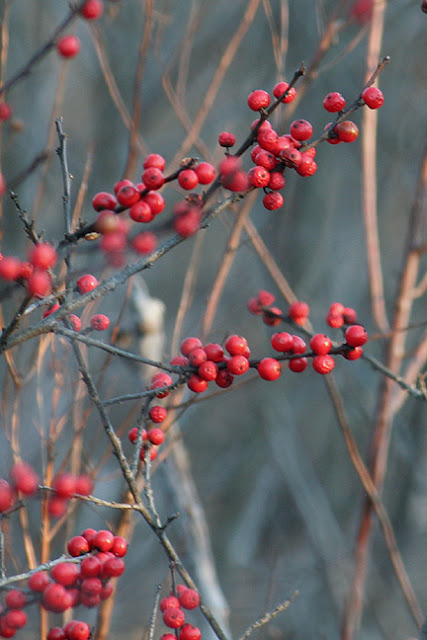Remember a week or so ago I was commenting--NOT complaining--that winter had gone AWOL around here. Very little snow, very mild temperatures.
Well, we found winter up in East Tawas.
Two to three inches of snow fell early Friday, and we arrived to a town awash in white (on some pretty crappy roads). After the winds and snow the weather cleared, but the temps also dropped, and Saturday morning saw a frigid 7 degrees. Well, we had come prepared, and were not about to be deterred in our quest for Snowy Owls. So we bundled up and drove down to Tawas Point State Park.
 |
| Lisa, Lori and me at Tawas Point. Photo by Karin. |
When we got to the park it was about 15 degrees with a wind from the north between five and 10 mph. That doesn't seem like much but it made for wind chills around zero. Exposed or poorly covered skin got painfully cold in a hurry.
I was also concerned about my photo equipment. I'd never had it out in temps that low and didn't know how it would perform. Turned out it was fine, and the only problems were with the operator.
Before reaching the beach we came upon a pond criss-crossed by fox tracks. You can see where the animal slipped and slid on the ice after coming off the bank to the right.
It was pretty brutal on the beach but luckily the wind was at our backs, making it tolerable. The fresh snow made the search for a white bird that much more complicated. We scoured hummocks and grasses up and down the shore.
While the lake was open here at the point, the frigid temps were evident along the shore. Even the midday sun was not warm enough to thaw these rocks.
Despite the temperatures it was a beautiful day.
We reached the end of the point and stopped for a few minutes. We had seen no owls, and with the exception of two birds on the beach (you'll read about them in my next post), we hadn't seen any birds at all. I'm sure they were hunkered down, keeping warm.
We decided against walking up the other side of the point, which would have put us walking straight into the wind, and instead took the broad path that runs up the middle, a more sheltered option.
We enjoyed the scenery along the path, and did finally see some juncos.
As we neared the parking lot the trail opened up to the lighthouse grounds. This popular and well-preserved light is reported to be haunted. Apparently it was too cold even for the ghosts--the place was utterly deserted.
We were happy to get back to the car and out of the wind. It was early still, so we decided to drive to the pier to see if we could spot any waterfowl. But first, we'll take a look at who we found on the beach!
Next: The first of two "life list" birds on our Tawas trip!
























































